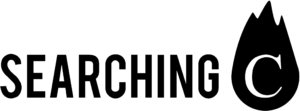FACTS ABOUT BRIGHT LIGHT THERAPY
The concept of bright light therapy, or exposing yourself to light in order to feel better, has been around for centuries, but modern science has revealed new ways to tap into its full potential. Thinking about getting started? Here are three key facts you need to know.
Sunlight is the single biggest factor behind life on Earth, so it should come as no surprise that it plays a key role in the your life — as it has in everybody’s! Many ancient cultures recognized (and even worshipped) sunlight’s healing properties.
Today, however, the overall amount and regularity of sunlight exposure we get is lower than ever. We live the majority of our lives indoors and travel frequently between time zones. That can have a variety of negative consequences, including that you may feel “off your game” with reduced mental and/or athletic performance.
If you’re considering light therapy as a way to feel better and bring your performance back up to optimal levels, here are three basic facts to keep in mind.
Your sub-optimal performance may be a result of circadian misalignment
In other words, the main point of bright light therapy in this case will be to shift your circadian rhythm to better align with your daily life. With a shifted, better-aligned circadian rhythm, you will probably sleep better and notice an improvement in your mood, energy levels, and general performance.
Your circadian rhythm is a set of physical and mental changes that your body goes through over a 24 hour cycle. (Womens’ circadian cycles are a little shorter, though.) This way your body knows when to be alert, when to wake up, and when to release certain hormones, for example. If your circadian rhythm is off, you may feel tired when it’s time to wake up or distracted when it’s time to focus.
The “master clock” of your circadian rhythm is in your hypothalamus, a part of your brain. There are number of other “peripheral clocks” located outside the brain that play a secondary role in timing your rhythm.
The thing is, your circadian clocks don’t set their own time independently. They take cues from zeitgebers or “time-givers,” which take a wide variety of forms including tides, food availability, and social activity. Zeitgebers, therefore, are what will either throw off the timing of your circadian clocks or put them back on track.

Light is the primary zeitgeber for your master circadian clock
Light, which enters your retina and travels to your hypothalamus along the retinohypothalamic tract, is the most important zeitgeber for your master circadian clock.
That’s why there is so much scientific research and interest in bright light therapy as opposed to high tide therapy, for example. We know, for example, that exposure to blue — and to some extent green — wavelength light signals your master circadian clock that it is time to be awake. Therefore it’s a good idea to avoid your computer and/or TV screen (or at least use f.lux) right before bedtime!
Your master circadian clock is most sensitive to light when you are asleep
Recent research has shown that humans’ master circadian clock responds relatively stronger to relatively smaller amounts of light during the night. That means you can get greater circadian shifting results from shorter periods of bright light therapy during the night. In other words, nighttime bright light therapy is a great circadian rhythm hack!
There’s just one small detail. If you are accustomed to sleeping at night, shining a light in your eyes doesn’t exactly help you get the rest that you’re missing in the first place. And you definitely won’t make a habit of using lights like that on a regular basis.
That’s where this recent study comes in. It showed that millisecond flashes of light through subjects’ closed eyelids (while they were asleep) were enough to make use of the nighttime advantage for circadian shifting without affecting their sleep. This finding made nighttime bright light therapy a viable opportunity for busy people in today’s sleep-deprived, jet-lagged world. And we built the Neuroon to help them capture that opportunity!
So to sum up, bright light therapy isn’t really necessary for the lucky few who wake up with the sunrise, get plenty of sunshine during the day, turn off the computer and TV well before bedtime, and travel long distances gradually with ample time for circadian rhythms to adjust. For the rest of us, bright light therapy — in particular at night — may help keep the master circadian clock ticking normally.
NeuroOn Mask:
https://searchingc.com/collections/neuroon/

